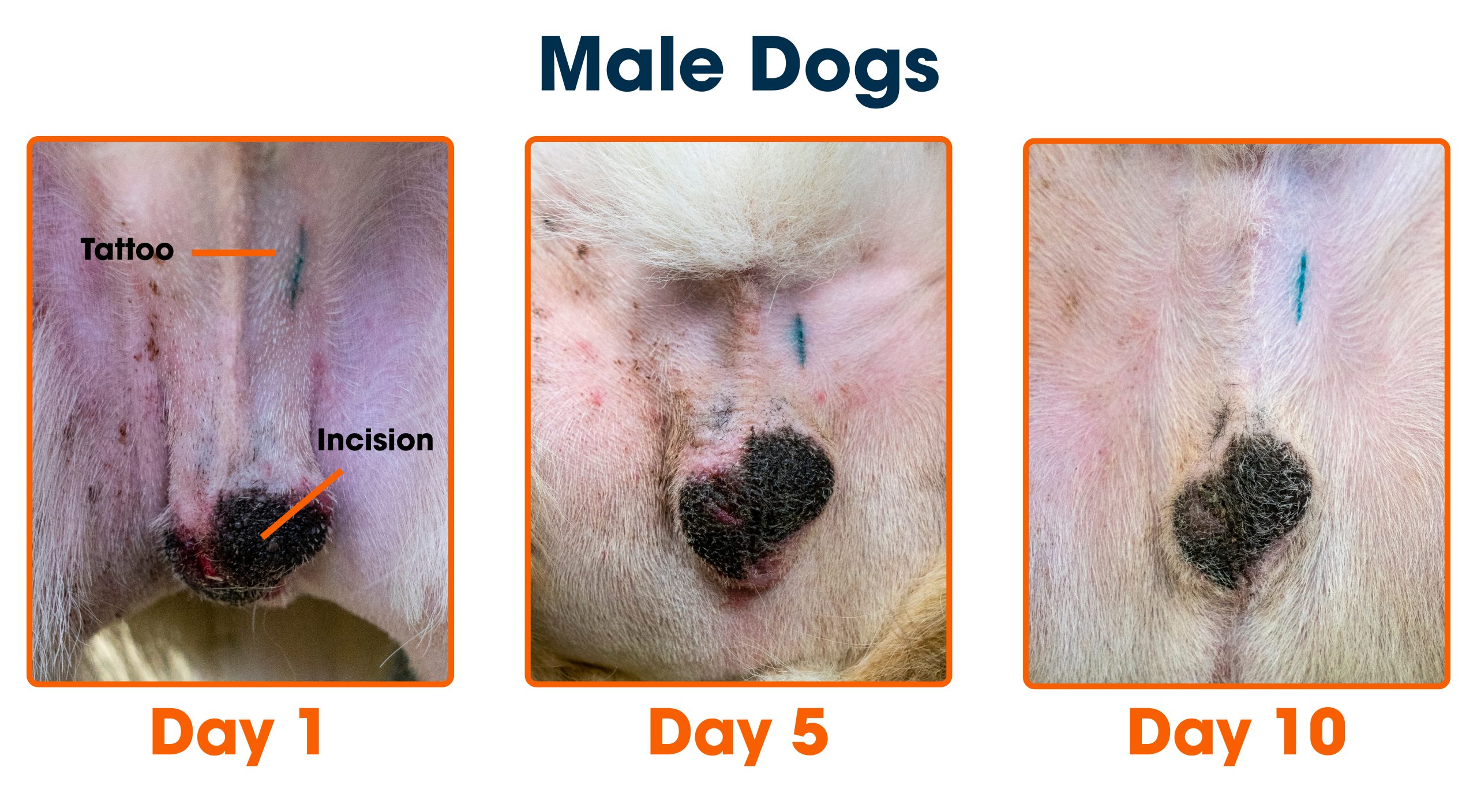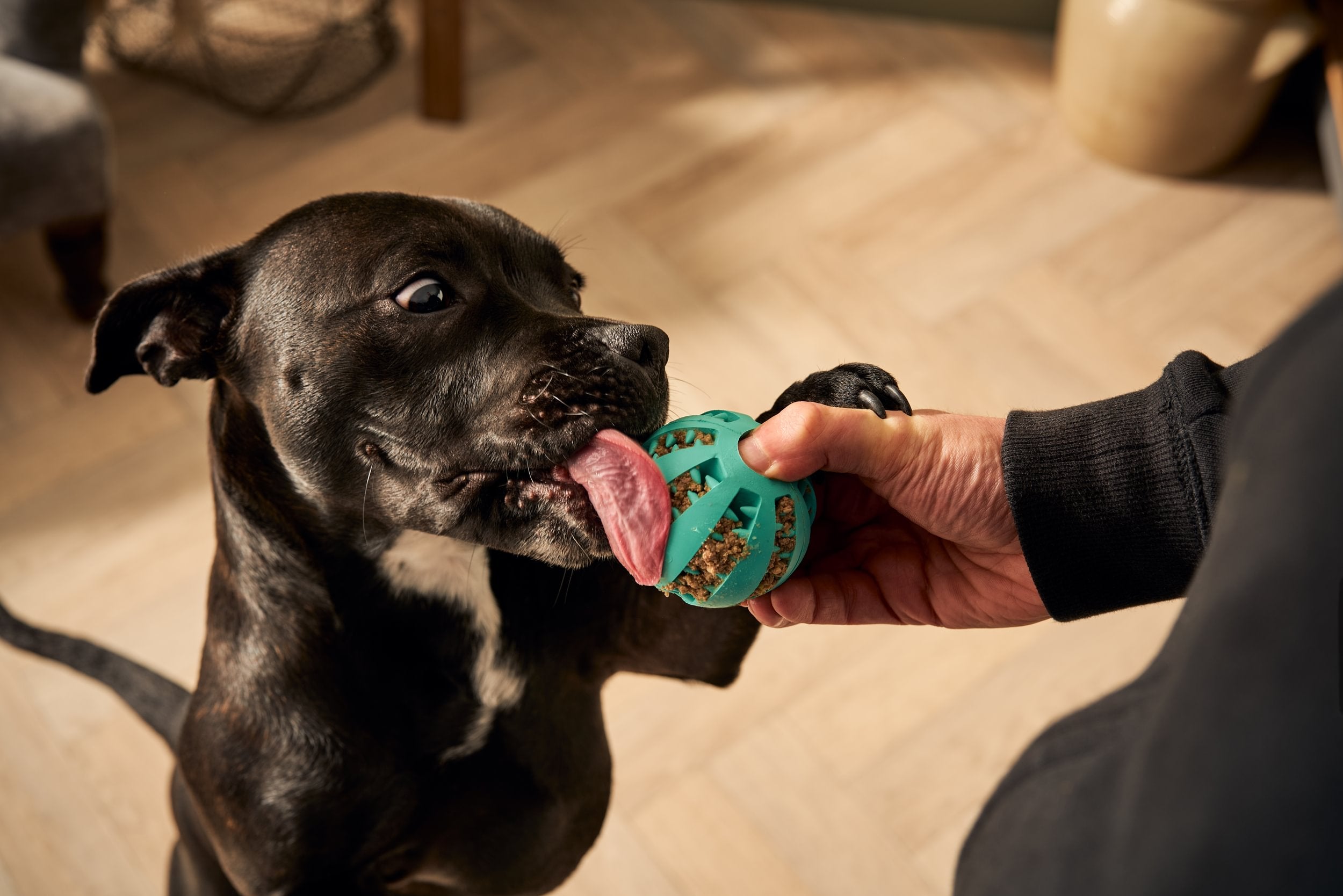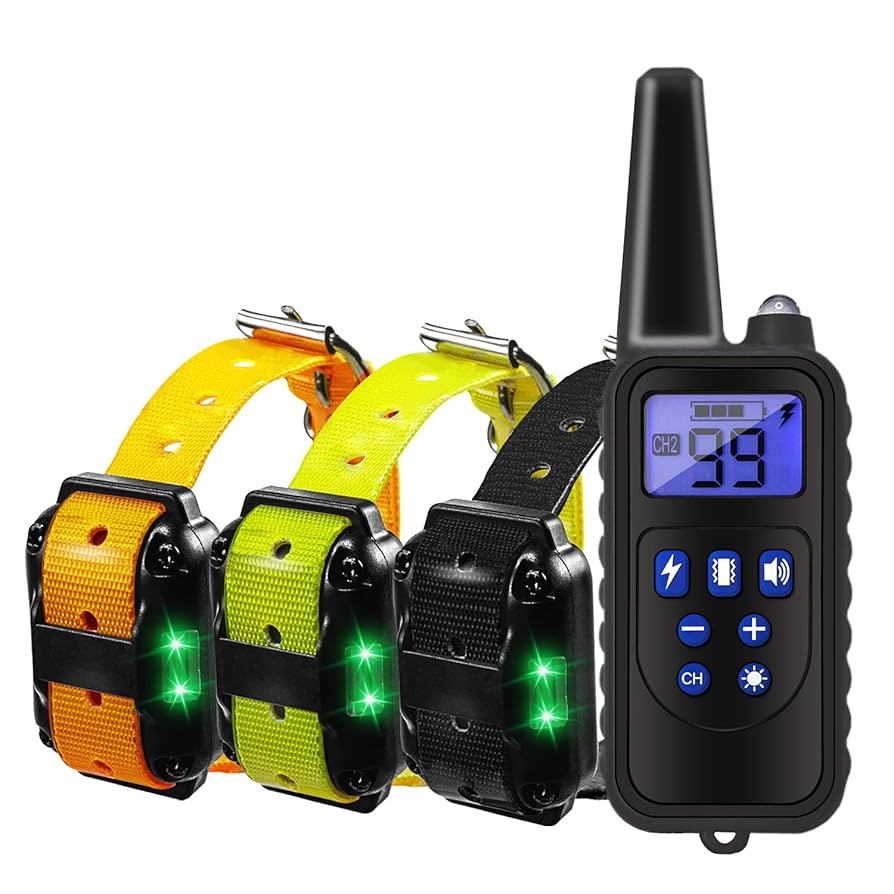If you want to train your dog quickly and effectively, remote training collars could be the solution you’ve been searching for. These collars give you control from a distance, helping you guide your dog’s behavior without constant leash tension or shouting commands.
Imagine having a tool that makes training smoother, safer, and more consistent—whether you’re at home, in the park, or on a hike. You’ll discover how remote training collars work, the benefits they bring, and what to look for when choosing one for your furry friend.
Keep reading to unlock the secrets to better communication with your dog and make training less stressful for both of you.
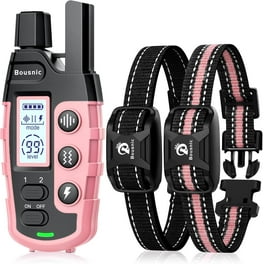
Credit: www.walmart.com
Benefits Of Remote Training Collars
Remote training collars offer many benefits for dog training. They help improve communication between you and your dog. These collars also enhance safety during training sessions. Plus, they provide versatile options to train different behaviors effectively.
Improved Communication
Remote collars allow clear signals to your dog. You can give instant feedback from a distance. This quick response helps dogs learn commands faster. The collar’s signals are easy for dogs to understand. Training becomes smoother and less confusing for your pet.
Enhanced Safety
Remote training collars keep dogs safe outdoors. You can stop unwanted behavior before it becomes dangerous. The collar helps control dogs near roads or other hazards. It also prevents dogs from running away. Safety increases for both dogs and their owners.
Versatile Training Options
These collars offer many training methods. You can use sound, vibration, or mild static signals. This variety suits dogs of different sizes and temperaments. The collars work well for obedience, recall, and behavior correction. They adapt to your dog’s needs and learning pace.
Types Of Remote Training Collars
Remote training collars come in various types to suit different dog behaviors and training needs. Each type uses a unique way to get your dog’s attention. Choosing the right collar helps make training easier and more effective.
Vibration Collars
Vibration collars use gentle vibrations to alert dogs. These collars do not cause pain. They are good for sensitive dogs or those who respond well to touch. The vibration acts as a warning before any stronger correction. Many trainers prefer vibration collars for safe, humane training.
Static Correction Collars
Static correction collars send a mild electric pulse. The pulse varies in intensity and is safe when used properly. This type helps correct unwanted behaviors quickly. It is important to start with the lowest setting. Static collars require careful use to avoid stress or discomfort.
Tone Collars
Tone collars emit a sound to get the dog’s attention. The sound can be a beep or a whistle. This type is useful for dogs that respond well to auditory signals. Tone collars work best in quiet areas. They are gentle and do not cause pain or discomfort.
Choosing The Right Collar For Your Dog
Choosing the right remote training collar for your dog is essential for effective training and your pet’s comfort. Not every collar suits every dog, so understanding key factors can save you time and frustration. Consider your dog’s size, personality, and what you want to achieve with training before making a choice.
Size And Fit
A collar that fits well ensures your dog stays comfortable and responds correctly to commands. Measure your dog’s neck accurately and check the collar’s adjustable range. A collar too tight can cause discomfort, while one too loose might slip off during training.
Look for collars with padded straps or flexible materials to prevent skin irritation. If your dog has a thick coat, find a collar designed to maintain good contact with the skin. Have you noticed how some collars sit differently on various breeds? That’s why sizing matters so much.
Dog’s Temperament
Your dog’s personality shapes the type of collar you should choose. Energetic dogs may need collars with stronger signals or vibration modes to grab their attention. On the other hand, shy or sensitive dogs often respond better to gentle, lower-intensity corrections.
Think about how your dog reacts to new experiences. Does your dog get anxious or stubborn? Selecting a collar with customizable settings helps you adjust the training to your dog’s comfort level. Have you ever tried a collar that overwhelmed your dog? It might be time to switch to a more suitable option.
Training Goals
Different collars come with features tailored to specific training needs. If your goal is basic obedience, a collar with simple beep or vibration signals might be enough. For more advanced training, such as recall or boundary control, look for collars with longer range and multiple stimulation levels.
Consider whether you want to train for behavior correction, off-leash control, or both. Some collars offer GPS tracking, which adds safety but isn’t necessary for every owner. What training results do you want to see, and how can the collar help you achieve them?

Credit: www.amazon.com
How To Use Remote Training Collars
Using a remote training collar correctly helps teach dogs good behavior safely. It requires patience and understanding. Start slowly to build trust with your dog. Consistent use improves results and strengthens your bond.
Familiarization With The Device
Let your dog see and sniff the collar before wearing it. Allow short periods of wearing without activating it. Watch your dog’s reaction to avoid stress. Use treats and praise to create positive feelings. This step helps your dog accept the collar calmly.
Setting Appropriate Levels
Begin with the lowest stimulation setting on the remote. Test it on yourself to understand the sensation. Increase levels only if your dog does not respond. Avoid using high settings that cause pain or fear. The goal is gentle correction, not punishment.
Timing And Consistency
Use the collar at the exact moment the unwanted behavior happens. Quick timing helps your dog connect the correction with the action. Repeat training sessions daily but keep them short. Consistency teaches your dog what is allowed. Always reward good behavior to encourage learning.
Training Techniques With Remote Collars
Remote training collars offer a flexible way to teach dogs new behaviors. They work by sending signals to the collar, helping guide your dog’s actions. Using the right techniques ensures training is effective and kind. Here are key methods to train your dog with remote collars.
Positive Reinforcement
Reward your dog for good behavior to encourage repeats. Use treats, praise, or play after the dog follows a command. The remote collar can give a gentle signal to mark the correct action. This helps your dog connect the behavior with the reward quickly. Positive reinforcement builds trust and makes training enjoyable for dogs.
Correction Techniques
Corrections should be mild and clear, never harsh or painful. Use the collar’s tone or vibration feature before the static stimulation. This warns your dog and allows time to adjust behavior. Apply a quick, light correction only if needed. Consistency is key to avoid confusion. Corrections guide your dog but should not scare them.
Gradual Progression
Start training at close range in a quiet place. Gradually increase distance and distractions as your dog improves. Introduce new commands slowly and repeat often. Use the collar signals sparingly at first, increasing only as needed. This step-by-step approach helps your dog learn steadily without stress. Patience leads to lasting results.
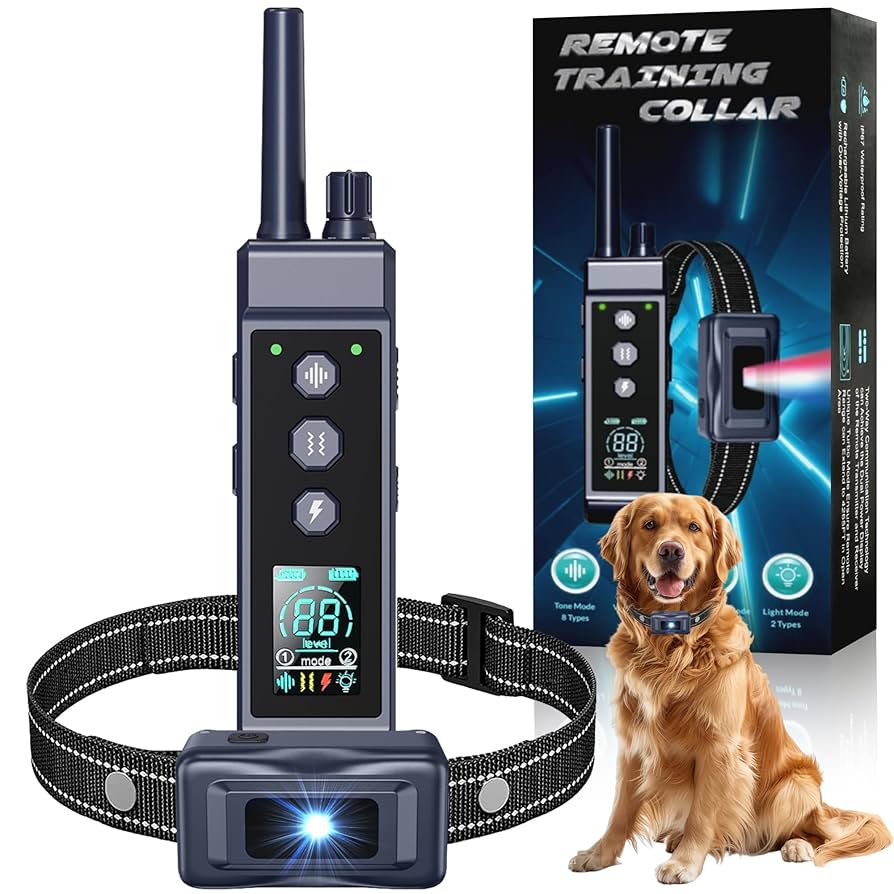
Credit: www.amazon.com
Common Mistakes To Avoid
Using a remote training collar for your dog can be effective, but only if you avoid common pitfalls. These mistakes can confuse your dog and slow down progress. Let’s look at some key errors to watch out for, so your training sessions stay positive and productive.
Overcorrection
Applying too strong a correction can frighten your dog and damage your bond. If the collar delivers a shock or vibration that’s too intense, your dog may become anxious or avoid you altogether. Start with the lowest setting and increase only if absolutely necessary.
Think about how your dog reacts after a correction. Does it seem scared or confused? If yes, you’re likely overcorrecting. Always aim for just enough feedback to get your dog’s attention without causing distress.
Inconsistent Usage
Using the collar sporadically or sending mixed signals confuses your dog. If you correct a behavior sometimes but ignore it other times, your dog won’t understand what’s expected. Consistency is crucial for building clear communication.
Stick to a regular training schedule and apply the collar in the same context. This helps your dog link the correction with the behavior you want to change. Are you using the collar only when you remember, or every time the behavior occurs?
Ignoring Positive Behaviors
Many owners focus solely on stopping bad behavior and forget to reward good actions. Dogs learn faster when you balance corrections with praise and treats. Ignoring positive behavior can make training feel like a punishment session.
Make it a habit to praise your dog immediately when it follows commands or behaves well. This encourages repetition of good habits. What small wins can you celebrate today to boost your dog’s confidence?
Safety Tips For Remote Training Collars
Remote training collars can help teach your dog good behavior safely. Using these collars correctly reduces risks and keeps your dog comfortable. Follow key safety tips to protect your dog’s skin and well-being during training sessions.
Monitoring Skin Irritation
Check your dog’s neck often for redness or bumps. Remove the collar immediately if skin irritation appears. Clean the area gently with warm water. Avoid using harsh soaps or chemicals that can worsen irritation. Monitor skin health daily during training periods.
Regular Collar Checks
Inspect the collar for wear and tear regularly. Make sure the collar fits snugly but not too tight. It should allow one or two fingers to slide under comfortably. Replace batteries and parts as needed to prevent malfunctions. Ensure the collar’s contact points are clean and smooth.
Avoiding Prolonged Use
Limit collar wear to short training sessions only. Do not leave the collar on your dog all day or night. Prolonged use can cause discomfort and skin problems. Give your dog breaks without the collar to relax. Use the collar as a training tool, not a constant accessory.
Frequently Asked Questions
What Is A Remote Training Collar For Dogs?
A remote training collar is a device used to train dogs remotely. It sends signals to the collar to reinforce commands. It helps improve obedience and correct unwanted behaviors efficiently.
How Do Remote Training Collars Work?
Remote training collars work by delivering vibrations, sounds, or mild static stimulation. The trainer controls the collar with a handheld remote. This communication helps dogs associate commands with specific actions.
Are Remote Training Collars Safe For Dogs?
Yes, when used correctly, remote training collars are safe. Always follow manufacturer guidelines and avoid excessive stimulation. They should be part of a positive training routine to ensure dog welfare.
What Are The Benefits Of Using Remote Training Collars?
Remote training collars offer effective communication at a distance. They enhance training consistency and speed. They also provide control in distracting environments, making training more manageable for owners.
Conclusion
Remote training collars help improve your dog’s behavior effectively. They offer control and clear communication during training sessions. Using these collars correctly keeps your dog safe and happy. Always choose a collar that fits your dog’s size and needs. Training takes time and patience, so stay consistent.
With practice, your dog will learn commands faster. Enjoy the bond that grows from good training habits. Remote collars are a helpful tool, not a quick fix. Use them wisely to build trust and respect.

